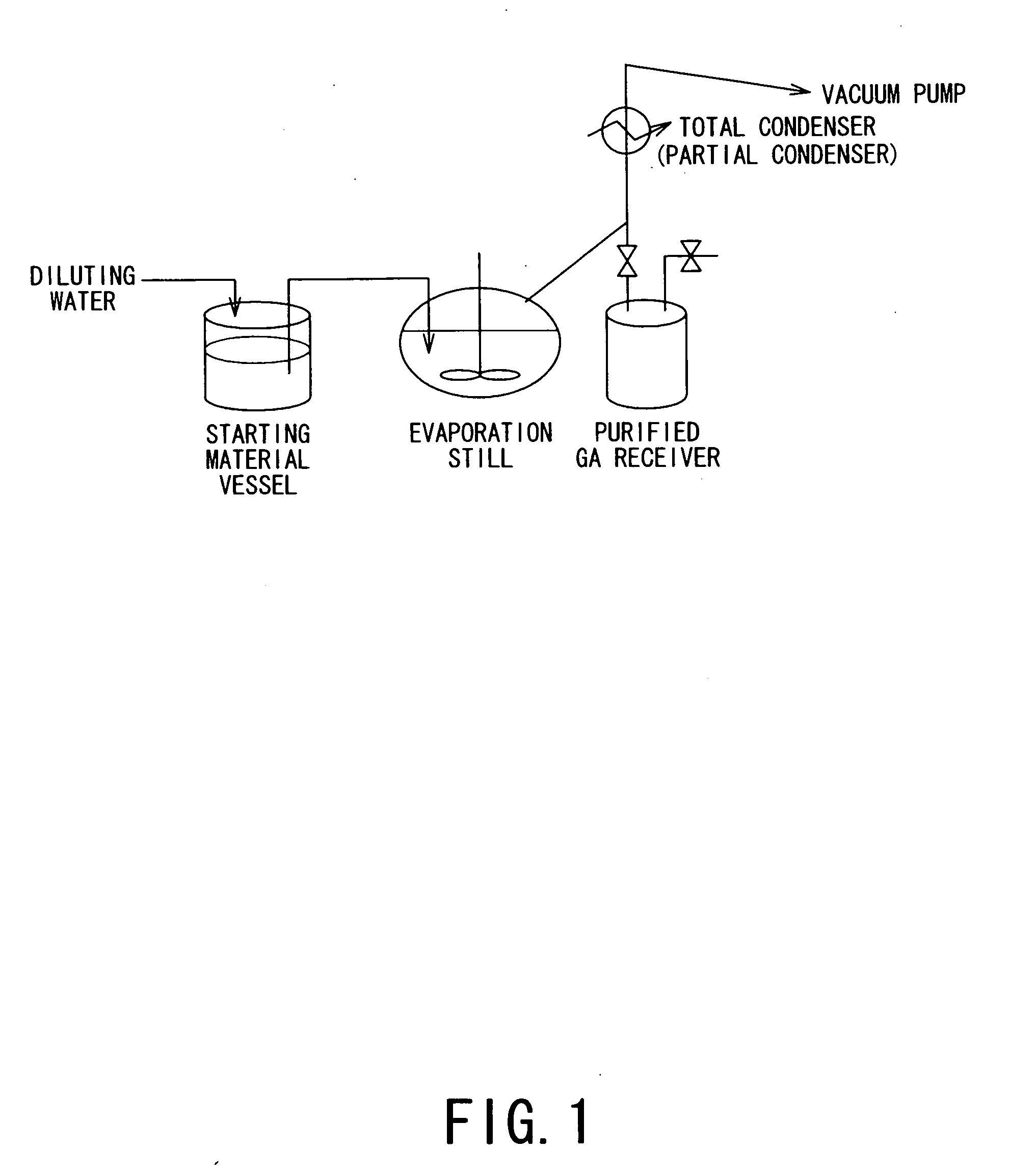Method for purifying hydroxycarboxylic acid, method for producing cyclic ester, and method for producing polyhydroxycarboxylic acid
- Summary
- Abstract
- Description
- Claims
- Application Information
AI Technical Summary
Benefits of technology
Problems solved by technology
Method used
Image
Examples
examples
[0051]Hereinbelow, the process for purifying a hydroxycarboxylic acid by distillation according to the present invention will be described more specifically based on Examples (experimental examples).
[0052]Incidentally, the contents of GA and impurities, such as di-GA, in the following Examples are based on the values measured according to the following methods, and GA recovery yields are also based on the results.
[0053]Analyzer: HPLC (high performance liquid chromatography) apparatus (“SCL-6B”, made by K.K. Shimadzu Seisakusho)[0054]Detector: UV (wavelength: 210 nm)[0055]Column: Two columns of “Inertsil ODS-3V” (made by GL Science Co.) connected in series[0056]Column temperature: 40° C.[0057]Elution liquid: A solution of 26.6 g of phosphoric acid and 11.5 g of ammonium dihydrogen-phosphate in 1 L of pure water.[0058]Flow rate: 0.7 ml / min.
[0059]A sample is accurately weighed at 1 g, and 0.6 g of sodium hydroxide is added thereto, followed by dissolution in 20 ml of pure water and 30 ...
example
[0069]A distillation experiment was performed by using an apparatus as illustrated in FIG. 1.
[0070]The starting materials included 200 g of industrial-grade GA aqueous solution (made by DuPont) containing 66.32% of GA (and dimer thereof) and, as impurities, 0.93% of di-GA (and further 2.90% of methoxy acetic acid, 0.90% of formic acid, 23 ppm of NH4, 6 ppm of Na, 14 ppm of Ca, 5 ppm of Mg and 74 ppm of SO4), and 200 g of polyoxyethylene-2-ethylhexyl ether (“Newcol 1006”, made by Nippon Nyuhkazai K.K.; boiling point: above 300° C.), which were charged as an initial mother liquid into an evaporation still (distillation vessel) having an inner volume of ca. 0.5 liter and heated to 140° C. under a reduced pressure of 3 kPa·abs., thereby cutting off (removing) 81.2 g of an initial distillate. Then, a feed liquid separately formed in a starting material vessel by diluting the above-mentioned starting material GA aqueous solution with water to provide concentrations at 25.73% of GA (and di...
PUM
| Property | Measurement | Unit |
|---|---|---|
| Fraction | aaaaa | aaaaa |
| Boiling point | aaaaa | aaaaa |
| Polarity | aaaaa | aaaaa |
Abstract
Description
Claims
Application Information
 Login to View More
Login to View More - R&D
- Intellectual Property
- Life Sciences
- Materials
- Tech Scout
- Unparalleled Data Quality
- Higher Quality Content
- 60% Fewer Hallucinations
Browse by: Latest US Patents, China's latest patents, Technical Efficacy Thesaurus, Application Domain, Technology Topic, Popular Technical Reports.
© 2025 PatSnap. All rights reserved.Legal|Privacy policy|Modern Slavery Act Transparency Statement|Sitemap|About US| Contact US: help@patsnap.com

